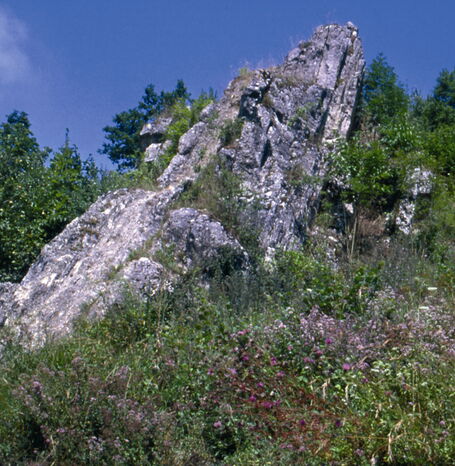Until its destruction in 1758 during the Seven Years' War, the castle changed hands frequently and defied numerous sieges, especially in the 16th and 17th centuries.

Southwest of the castle ruins, a steeply tilted rock cliff of trochite limestone, the "Scharfe Stein", juts out of the hillside. It indicates a fault zone of the "Volkmarser Graben", which marks the tectonic boundary between the Rhenish Slate Mountains in the west and the Hessian Depression in the east. The rock takes its name from rock-forming organism parts, the trochites. These roundish star-shaped fossils, also known as sunstones, wheel stones, Bonifatius pennies, witch money, dwarf stones or millstones, are the fossil style members of crinoids (sea lilies), which occurred en masse in the shallow sea area of the Germanic Basin during the Muschelkalk period (middle Triassic). Sea lilies are related to sea urchins and starfish and live today only in the deep-sea south of the equator.
From the round tower of the castle ruins, you have a beautiful view over Westphalia and the Waldecker Land. The walk-in witch cellar takes you back to the time of the Middle Ages, the restaurant invites you to linger. On the slopes of the castle hill you can find relics of a rare oak-strawberry forest.

